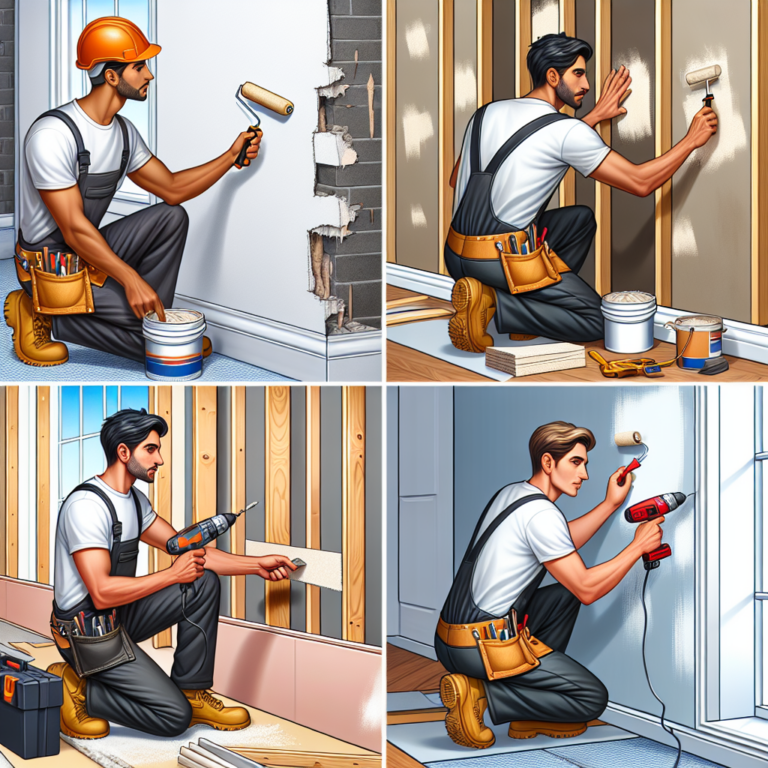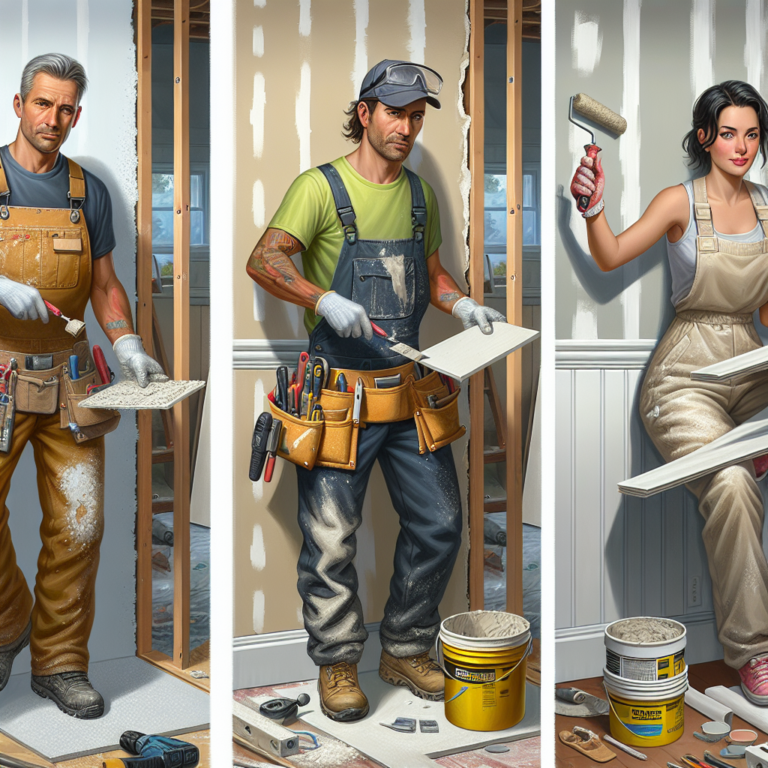Best Drywall Sheetrock for Your Next Home Project

When planning a home renovation or starting a new construction project, selecting the right drywall is a decision that should not be overlooked. High-quality drywall can make the difference between a long-lasting, durable space and a room plagued with issues like moisture damage, fire risks, or poor sound insulation. In this guide, we’ll explore the best drywall options to suit every room in your home and give you expert advice to make sure your project is a success.
The Importance of Choosing the Right Drywall
Many homeowners underestimate how critical the type of drywall is for their specific project. Using the wrong kind of drywall can lead to long-term problems such as moisture damage in bathrooms or inadequate fire protection in utility rooms. The right drywall can enhance not only the functionality of your space but also its safety and energy efficiency. Selecting moisture-resistant drywall in wet areas, for example, can help prevent mold growth and structural damage, while using fire-rated drywall in garages provides vital protection.
What is Drywall Sheetrock?
Let’s clear up some confusion: Drywall and Sheetrock are often used interchangeably. However, Sheetrock is a specific brand of drywall manufactured by USG Corporation. Both are gypsum-based materials, and the terms have become synonymous over time. Whether you’re referring to generic drywall or the brand Sheetrock, the product itself consists of a gypsum core that’s covered with heavy-duty paper, creating a sturdy yet lightweight material used to form walls and ceilings.
Types of Drywall for Different Projects
Now, let’s dive into the different types of drywall and where they’re best used. Each type has been engineered for particular environments and conditions, so selecting the appropriate type is key to long-term durability.
-
Standard Lightweight Drywall Sheetrock
Best For: Living rooms, bedrooms, and hallways.
Description: This is the most common type of drywall for general interior spaces. It’s lighter than traditional drywall, which makes it easier to work with, especially in larger areas. If you’re working on a standard renovation in non-moisture-prone areas, this is likely your best option. You can buy standard lightweight drywall for living rooms, hallways, and bedrooms where moisture and soundproofing aren’t major concerns. -
Moisture-Resistant Drywall (Green Board)
Best For: Bathrooms, kitchens, basements, or any high-humidity area.
Description: In areas like bathrooms or basements, moisture is a constant enemy. Green board, which is treated to resist water, helps protect your walls from absorbing moisture, thereby reducing the risk of mold and mildew. While it’s not completely waterproof, it’s an ideal choice for areas with high humidity. Consider using moisture-resistant drywall to keep moisture problems at bay. -
Fire-Rated Drywall (Type X)
Best For: Garages, utility rooms, and areas where fire safety is critical.
Description: Fire-rated drywall, also known as Type X, is thicker and fortified with non-combustible fibers. This makes it essential in spaces like garages, where fire safety regulations often require it. It can significantly slow the spread of fire, giving you extra time to respond in the event of an emergency. You can buy fire-rated drywall to meet building code requirements in these high-risk areas. -
Soundproof Drywall
Best For: Home offices, media rooms, and recording studios.
Description: Soundproofing is essential for areas like home offices, media rooms, or recording studios, where noise control is a priority. Soundproof drywall is designed with extra layers to absorb and block sound transmission, making your space quieter and more private. For a peaceful environment, check out soundproof drywall options that can help reduce noise levels in your home.
Pro Tips for Drywall Installation
Even the best drywall won’t perform well if it’s not installed correctly. Whether you’re taking the DIY route or working with a professional, here are some key tips to ensure a smooth installation:
1. Measure Twice, Cut Once
Drywall installation is all about precision. Be sure to measure your space carefully before making any cuts. This not only reduces waste but also ensures that your panels fit perfectly, which is critical for a professional-looking finish.
2. Use the Right Tools
Invest in quality tools like a utility knife, drywall saw, and T-square. These will make your life much easier during installation. For a hassle-free installation experience, shop for drywall tools here.
3. Properly Tape and Mud Joints
To achieve a seamless wall finish, it’s essential to tape and mud your drywall joints properly. This step not only smooths out seams but also strengthens the overall structure of your wall.
Avoid These Common Drywall Mistakes
Even seasoned DIYers can run into trouble when installing drywall. To avoid common pitfalls, be mindful of these mistakes:
- Skipping moisture-resistant drywall in humid areas: Always opt for moisture-resistant drywall in high-humidity spaces to prevent mold issues.
- Over-sanding: Excessive sanding can weaken the drywall surface and create dips. Sand lightly and evenly to maintain a smooth surface.
- Failing to stagger joints: Lining up joints creates weak points in your wall. Always stagger the seams to ensure the wall’s strength.
FAQs: Quick Answers to Your Drywall Questions
What is the best drywall for bathrooms?
Moisture-resistant drywall, often referred to as green board, is the ideal choice for bathrooms and other high-humidity areas. It helps prevent mold and mildew, making it a long-lasting option.
Can I use standard drywall in my garage?
No, it’s recommended to use fire-rated drywall in garages or utility rooms, as these areas often have specific building code requirements for fire protection.
Choosing the right drywall for your home renovation or construction project doesn’t have to be overwhelming. Whether you’re looking for moisture-resistant, fire-rated, or soundproof drywall, there’s an option that fits your needs perfectly. Take the time to invest in quality materials and follow the installation tips to achieve the best results. Happy renovating!




